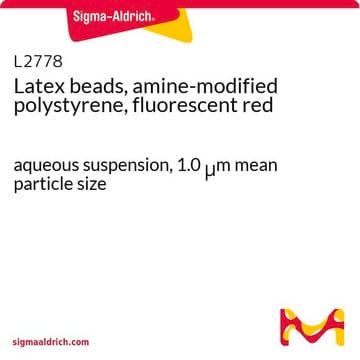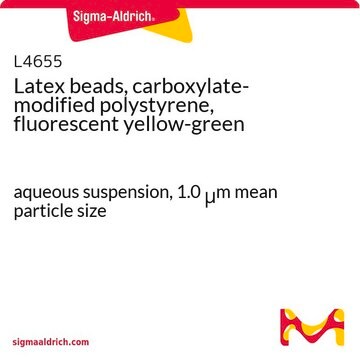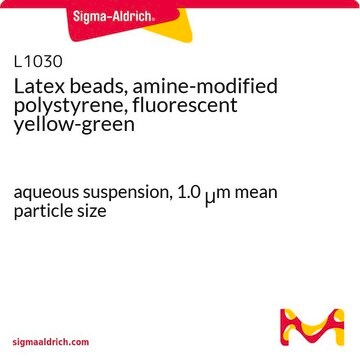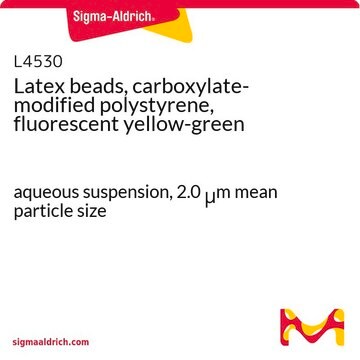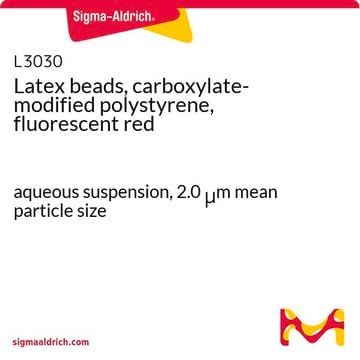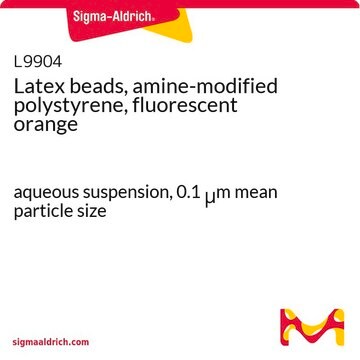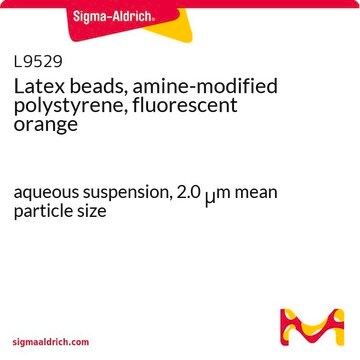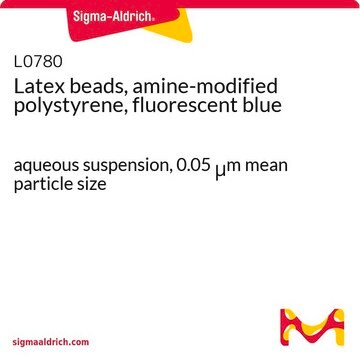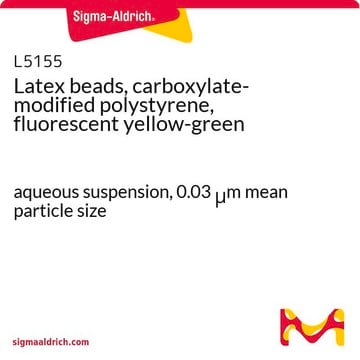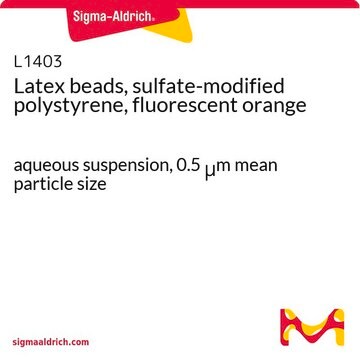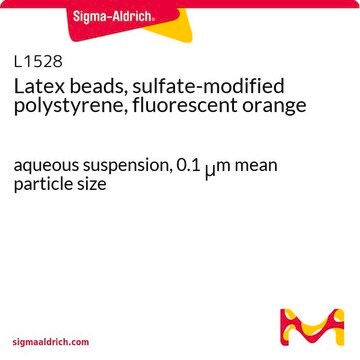Polystyrene beads are available in several formats - unmodified, carboxyl-modified, or amine-modified - as well as various colors and numberous sizes. This particular product is an amine-modified bead containing a blue fluorescent dye. See the image below to review the basic structure. This is a surface modification that allows for the attachment of certain ligands such as polypeptides via the carboxyl-terminus. The dyes are embedded in the polystyrene bead during the manufacturing process. These are not bound to the surface of the bead.
L9654
Latex beads, amine-modified polystyrene, fluorescent orange
aqueous suspension, 1.0 μm mean particle size
About This Item
Recommended Products
form
aqueous suspension
Quality Level
composition
Solids, 2.4-2.6%
technique(s)
cell based assay: suitable
mean particle size
1.0 μm
fluorescence
λex ~520 nm; λem ~540 nm
application(s)
cell analysis
Looking for similar products? Visit Product Comparison Guide
Application
- to test nanofiber filtration efficiency[1]
- in the preparation of bilayer tissue-simulating phantoms, which are artificial materials used in biomedical optical instrumentation[2]
- to copolymerize collagen coated stiff polyacrylamide gels to seed cancer cells for traction force microscopy[3]
Storage Class Code
10 - Combustible liquids
WGK
WGK 2
Flash Point(F)
Not applicable
Flash Point(C)
Not applicable
Choose from one of the most recent versions:
Already Own This Product?
Find documentation for the products that you have recently purchased in the Document Library.
Customers Also Viewed
-
Does the polystyrene bead have amine groups attached to the bead surface? What is the purpose of this modification? How is the dye bound to these beads.
1 answer-
Helpful?
-
Active Filters
Our team of scientists has experience in all areas of research including Life Science, Material Science, Chemical Synthesis, Chromatography, Analytical and many others.
Contact Technical Service